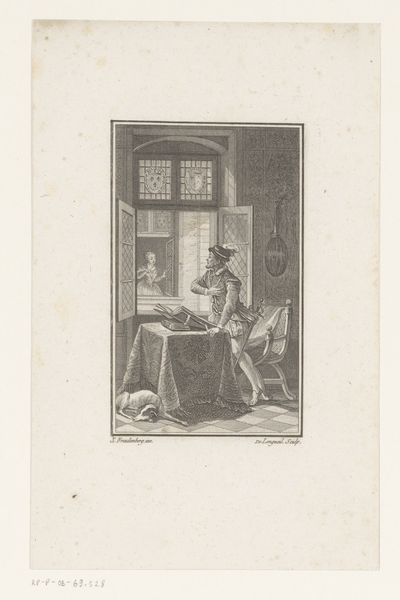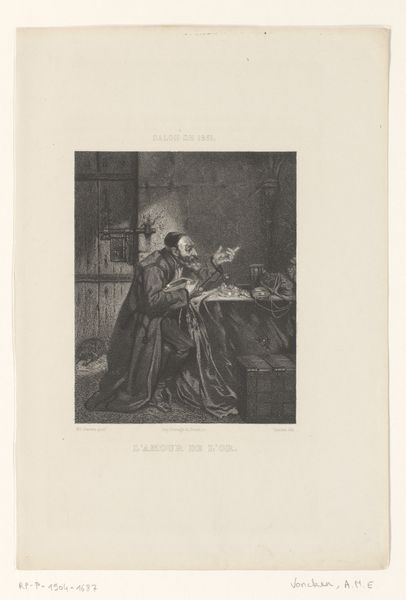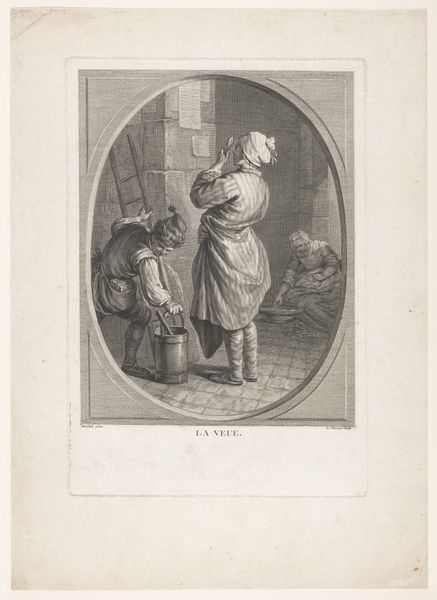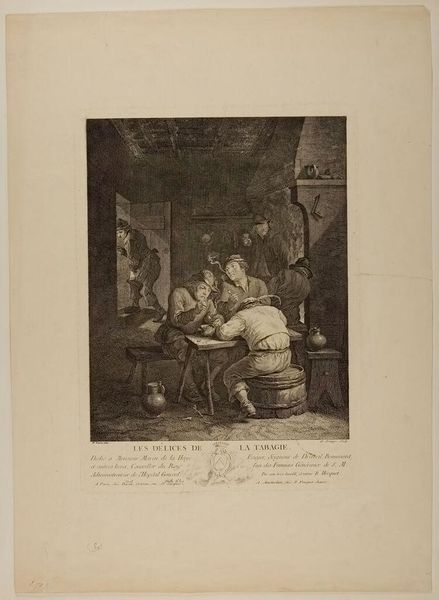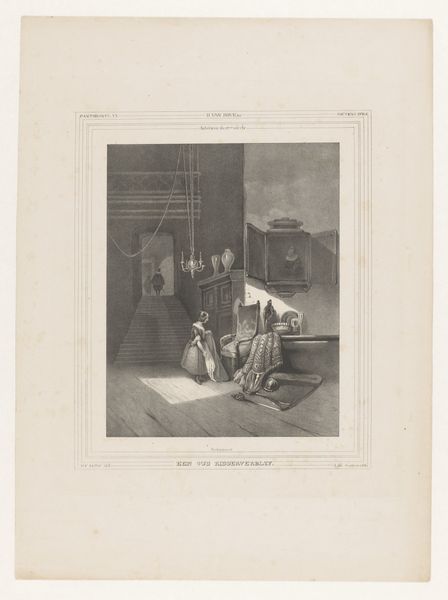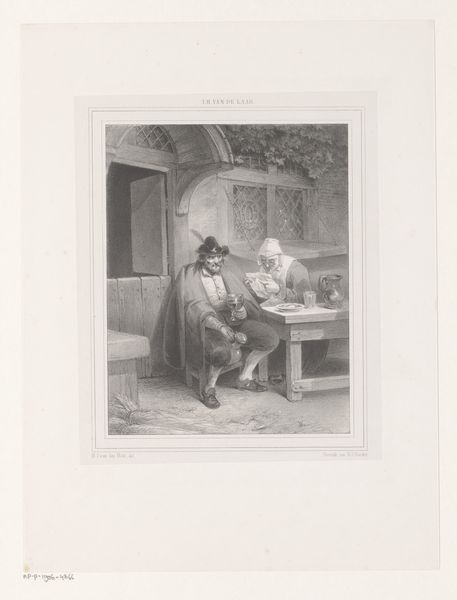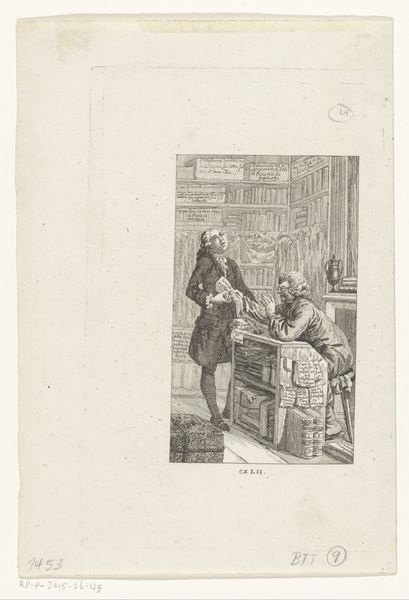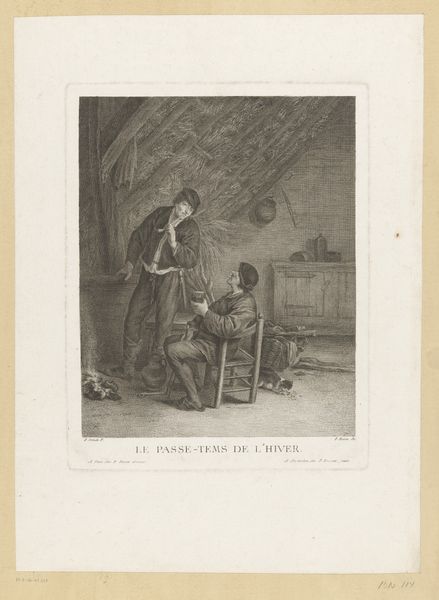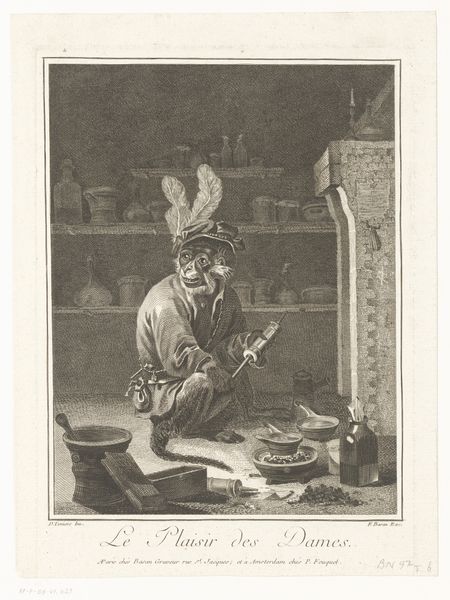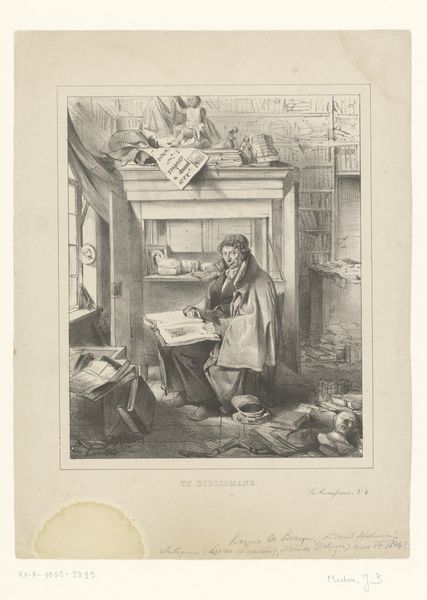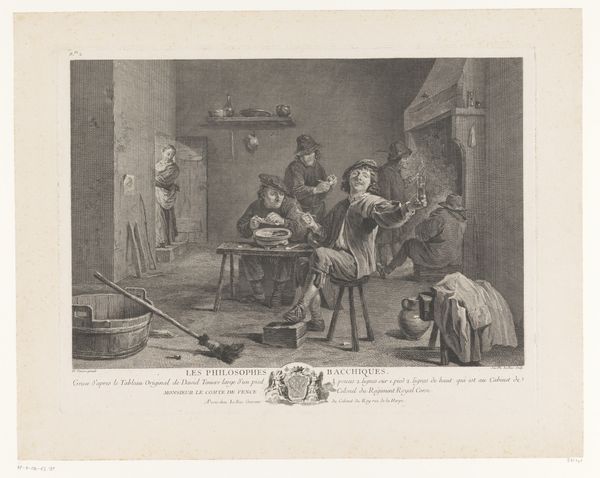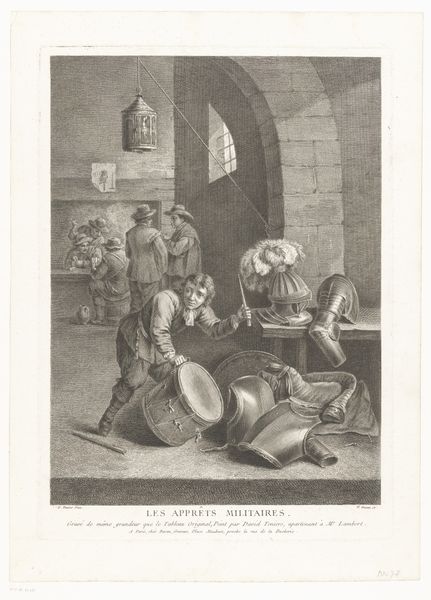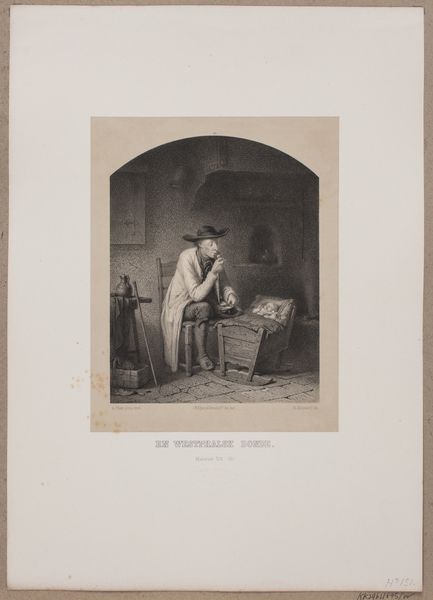
Dimensions: height 265 mm, width 190 mm
Copyright: Rijks Museum: Open Domain
Editor: So, this is “Spotprent van een chemicus als aap,” or “A caricature of a chemist as an ape” by Pierre François Basan, created sometime between 1739 and 1797. It's an engraving, and quite a bizarre image. The monkey-chemist is captivating, yet…disconcerting. What do you make of this unusual character and setting? Curator: The animal-like figure immediately grabs attention, doesn't it? It triggers our cultural memory around bestiality and mockery. The bestial imagery connects with societal anxieties surrounding knowledge, ambition, and the potential for its misuse or, rather, misinterpretation. Are we laughing at science or fearing its implications? Editor: It feels like both, a bit. I see that the text at the bottom is "Le plaisir des fous" (The pleasure of fools), what are your thoughts about this association? Curator: Precisely! It serves as a biting commentary. Consider the alchemist's aspirations: turning base metals into gold, or discovering the elixir of life. Basan uses this satirical image to cast doubt on those grandiose pursuits. Note the symbols of vanity—the feathered hat, the cluttered laboratory. It subtly tells a story of folly. How do you see these symbols interacting? Editor: I suppose the details make it all seem like a precarious endeavour—the monkey so focused, the odd clutter – perhaps the ape’s ‘pleasure’ is built on sand. Does it also suggest a continuity of foolish pursuits in human history? Curator: That’s insightful! It’s a historical anchor. Even today, don’t we see echoes of this ‘fool’ in those who chase unattainable goals without grounding themselves in true wisdom? Editor: I never thought a simple caricature could hold so much meaning! Curator: Art often works that way, holding cultural weight that accumulates over centuries, mirroring and mocking our own aspirations.
Comments
No comments
Be the first to comment and join the conversation on the ultimate creative platform.
